Tires are round, and that’s a fact. However, that doesn’t mean your tire can’t lose that perfect round shape. This leads to what we call an “out-of-round tire.”
Having an out-of-round tire is not good news, yet it isn’t necessarily the end of that tire.
This article offers you all you need to know about out-of-round tires, their symptoms, how you can prevent them, and more. If that catches your attention, read on to know more.
Table of Contents
As the term “out of round” suggests, it refers to a tire that has lost its perfectly round shape. This imperfection throws the tire off balance. Tire runout is another term used to describe an out-of-round tire. Tire runout wouldn’t significantly affect your tire’s performance initially; however, you begin to notice symptoms as it gets critical. We will discuss this as we proceed.
There are two forms of tire runout: the lateral and the radial runout. Below is an overview of these types of tire runout:
This type of tire runout is the more common between the two. The radial tire runout deals with the distance between the center of the wheel and your tire’s tread. The distance between the wheel’s center and your tire’s tread should be exactly the same at every point outside your tire.
Radial runout has to do with distance discrepancies from point to point. Depending on the magnitude of the difference, the rotation of your tire will experience disturbance. This is because the radial runout will cause the wheel to bounce up and down, resulting in vibrations that you can feel from the steering.
Lateral runout deals with the center of the wheel and the tire’s tread edges. The more significant the lateral runout on the tires, the less stability its rotation will have. As a result, your tire will begin to move from side to side or wiggle.
To sum it all up, radial runout will cause your tire to bounce, while lateral runout will make it wiggle erratically.
Having an out-of-round tire is unpleasant, but knowing its symptoms can help you avoid or prevent it. So what are the signs or symptoms to look out for when identifying tire runout?
4 symptoms of out of round tireThese are some of the primary symptoms of an out-of-round tire. Keep in mind that if you feel vibrations in the seat, the issue originates from the rear. Also, if you feel these vibrations in the steering wheel, it’s a pointer that the problem is at the front.
Certain factors can cause your tires to become out-of-round. Tire runout can be caused by a lack of maintenance or manufacturing defects. Below is an overview of these causes.
Causes of out of round tireCheaper tires may not go through many quality control processes. Because of this, manufacturers may use inferior molds, resulting in uneven wear on your tires. As mentioned earlier, uneven wear on a tire can cause a tire runout. Keep in mind that segmented molds are used to produce high-quality tires. This allows for much rounder tires.
Having a perfectly round tire is excellent but isn’t good enough. Depending on whether or not the tire is mounted correctly, you may experience a tire runout. What we are saying, in essence, is that a perfectly round tire can become out-of-round if mounted improperly.
In the medical field, wrongly diagnosing a patient could lead to severe complications. The same goes for tires. Some tire problems have similar symptoms, which could mislead you if you aren’t careful enough. Let’s take, for instance, a perfectly round tire that may be imbalanced, causing it to shake. This is one of the symptoms of an out-of-round tire and could make you misdiagnose.
Similarly, a bent wheel may make a perfect round tire seem out of round. A separated tire will also mimic the symptoms of an out-of-round tire, causing it to shake violently. This shaking is because part of the tire’s outer tread cap has been separated from the tire’s body. As a result, tire failure follows quickly.
While your tires won’t go out of commission once you notice the first symptoms, having an out-of-round tire isn’t something to take lightly.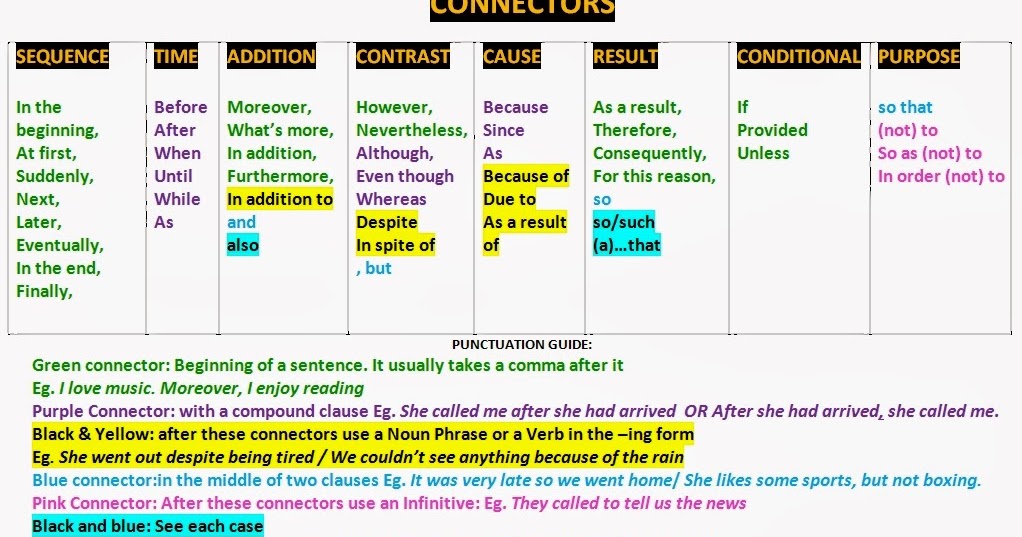 Your safety when driving should be a top priority, so you wouldn’t want to jeopardize that.
Your safety when driving should be a top priority, so you wouldn’t want to jeopardize that.
Driving on an out-of-round tire can be very uncomfortable as you will experience shaking, vibrations, wobbling, and more. Continuous driving on an out-of-round tire can result in tire failure. If this happens on the road, you may be in for a severe accident. There isn’t a given distance as far as a tire can be out-of-round before it’s bad. However, if you can avoid driving on an out-of-round tire, you should.
Once your tire is out-of-round, it can’t be fixed completely; however, you can manage it. How, you ask? You can manage an out-of-round tire by road force balancing your tire. Tire balancing is when additional weight is added to your rim in order to balance your tire’s weight. Doing this improves the ride quality of the tire.
A tire balancer will check for weak spots on your tire and rim, then put the strong part of the tire on the rim’s soft spot allowing for a smoother ride. However, this isn’t a fix as all it does is improve your faulty (out of round) tires. That being said, getting a new set of tires is the safest and most efficient fix.
However, this isn’t a fix as all it does is improve your faulty (out of round) tires. That being said, getting a new set of tires is the safest and most efficient fix.
An out-of-round tire is as comfortable as its severity. This means that as time goes on and with constant drive, it becomes less drivable. Why? Vibrations will be more severe, tire wobbling and bouncing might increase unbearably.
While driving on an out-of-round tire isn’t a great idea, we understand that some situations can’t be helped. That’s why it is essential to know the symptoms of a tire runout. Knowing its symptoms will help you prepare ahead of time for a new set of tires before it gets too severe. During that period, you can drive carefully with an out-of-round tire. But do you know what’s even better than knowing its symptom? Your ability to prevent it.
There are two major ways you can avoid having an out-of-round tire. You can prevent it by purchasing high-quality tires and by maintenance.
You can prevent it by purchasing high-quality tires and by maintenance.
We understand money doesn’t grow on trees, but using that extra cash to buy quality tires will save you a lot of trouble in the long run. High-quality tires are less likely to have issues than low-quality tires. As stated earlier, segmented molds are used to produce high-quality tires, giving them a perfectly round shape.
Be it a high-quality tire or a low-quality tire, they must be adequately maintained. Tire maintenance goes a long way in increasing the lifespan of your tires. Proper care also ensures your tire remains in its round state, preventing a tire runout. This implies that you should inspect and rotate your tires at least after every 7,500 miles or six months.
Thanks to this informational guide, you now have all the relevant knowledge regarding out-of-round tires. That way, you won’t be caught off-guard with a tire runout. Always remember, your safety and the safety of others on the road are a top priority. Ensure that you keep your vehicle roadworthy at all times.
That way, you won’t be caught off-guard with a tire runout. Always remember, your safety and the safety of others on the road are a top priority. Ensure that you keep your vehicle roadworthy at all times.
Read more: Broken Belt In Tire: Don’t Ignore Its Causes And Symptoms
Read more: Tire Wire Showing: How Long To Drive & How To Fix?
Telling if a tire is out of round is getting harder and harder by the day. Nowadays tire makers produce original equipment (OE) tires. (OE tires are factory tires that a vehicle is originally equipped with.)
Fix The Problem
An OE tire has to meet specific dimensions and weight requirements, along with longevity expectations, speed ratings and handling performance. This being said, an out of round tire is not common.
Read below to determine if you have an out of round tire.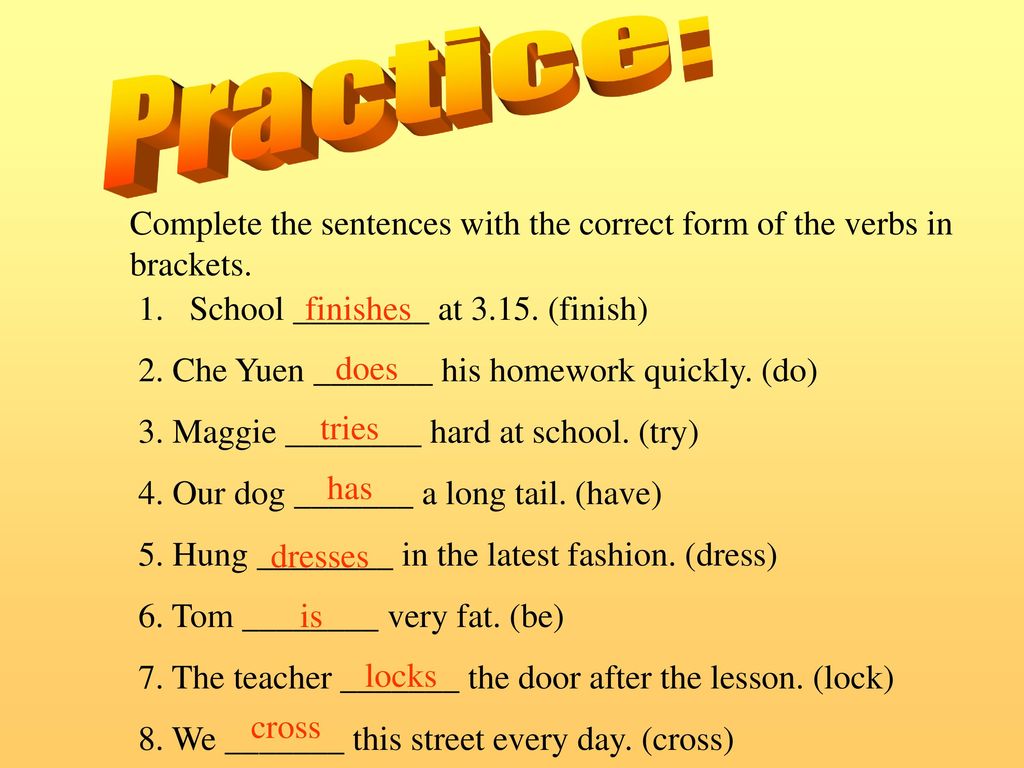
Just because something is not common, doesn’t mean it can’t happen.
Tweet
Learn what the numbers and letters mean on your tire here.
When looking for this rare occurrence, you should focus on determining if your tire is a perfect circle or not. An out of round tire has a weak spot or spots in the tire. These typically look like a subtle flat patch along the tread of your tire.
This patch or spot can be seen when the vehicle is stationary or parked. This weak spot in your tire will deflect differently from the rest of your tire, while the stronger part of the tire will resist bending and remain stiff, causing vibration.
Please note: If vibration can be felt in the seat, this indicates the problem is located at the rear. If vibration can be felt in the steering wheel this is a sign of a problem that is located in the front.
Advertisements
Out of Round Tire CheckLoud Tire Noise at Highway SpeedsHas your tire been causing your car to shake or vibrate? Or do you have loud tire noises while driving at highway speeds? A bad out of round tire is when the tire is no longer round, this can cause hash vibrations and road noise.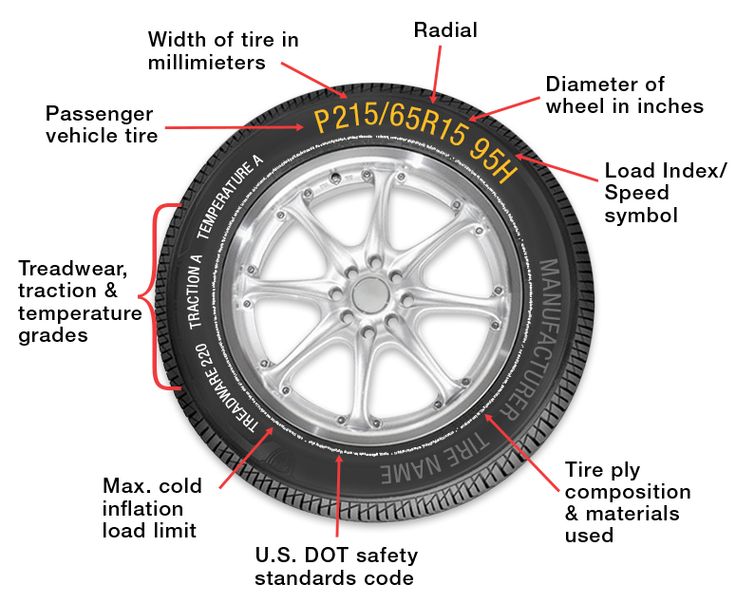
Once a tire is out of round the only thing you can do is replace the tire.
While there are many things that can cause a tire noise such as low tire tread, tire separation, out of balance tires, bent rims, out of round tires is definitely on the list of tire noise. The key is figuring out which noise is causing your harsh car ride.
An out of round tire is also known as tire run out. An out of round tire or tire run out means your tire is no longer perfectly round anymore. This will cause a tire noise or vibration.
There are two different kinds of out of round tire. Read below to understand the two cases.
Highway NoiseThe first and more common of the two is radial runout. Radial runout is when the distance from the center of the rim to your tire tread is different in certain areas of your tire.
Note: The distance from the center of your wheel to your tire tread should be the same distance all the way around.
Radial runout due to its different distances between the center of the rim to the tread of the tire will cause a rather harsh ride such as vibrations, tire noise, steering wheel vibrating/shaking and also bouncing. The worse the tire runout gets the more harsh your ride will be.
Time will heal most things…
Tweet
When your tire has some form of a rough ride due to tire runout, this harshness will travel through your tires and up your steering shaft. This vibration causes your steering wheel to shake. Your whole entire car may also shake or bounce, but in minor cases you may just experience loud road noise while driving.
The second type of out of round tire/tire runout is lateral runout. Lateral run out is when your tire has flat spots across your tread. This means your tire is weaker in certain spots on the tread of your tire. (Check for suspension issues)
When you put the weight of your vehicle on a tire with lateral runout, your tires will not be able to distribute the weight evenly. This type of runout happens between the center of your tread to the edge of your tread. As your tire spins, one part of your tire could be good and right next to it could be weaker.
This type of runout happens between the center of your tread to the edge of your tread. As your tire spins, one part of your tire could be good and right next to it could be weaker.
This form of out of round tire would cause your tire to lean when it hits that certain spot. This lean is due to the improper weight distribution within that tire. Lateral runout could also cause your tire(s) to move side to side like a wobble.
Can you Balance an Out of Round Tire?Usually you can NOT fix an out of round tire. However, you can maybe improve your ride quality by road force balancing your tire. Before we jump into that, let’s dive into a standard balancing.
A tire should be balanced when you put it on a rim. However, even new tires are usually not perfect. There are some spots that could be slightly heavier than the others. Balancing a tire is simply adding weight to your rim to balance out the weight of your tire.
A tire balancer will find the lighter spot on your tire and tell you to add weight in that certain spot on your rim. Without this procedure being done, you would have a very rough ride.
Without this procedure being done, you would have a very rough ride.
Having imbalanced tires can also cause more excessive tire wear. Due to excessive tire wear, you can cause a tire to become out of balance. Road force balancing will help a tire that is out of round or has excessive tire run out.
When you throw your tire up on the balancer a big roller will come down and mash your tire as it spins imitating the road. This detects the weaker points in the tire.
Like your tire, your rim also has a runout, so what the machine does is it will have you put a mark on the tire and a mark on the rim. Once you mark the rim and tire you will need to break your tire down and match the mark on the tire with the mark on the rim.
Make your mark on the world with the time you have.
Tweet
So, let’s say you have a weak point in the rim, the machine will have you put the stronger part of the tire on the weak spot on the rim.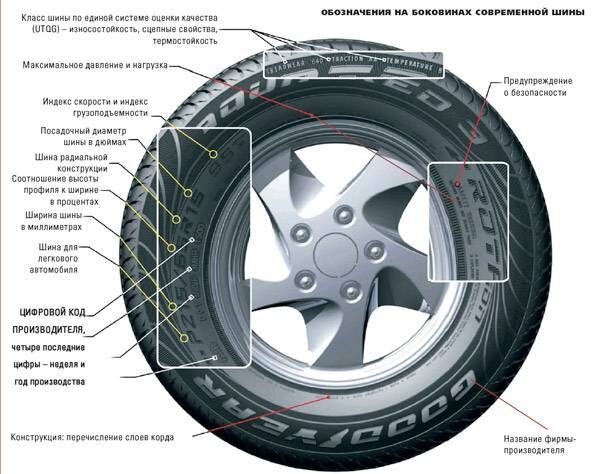 This will give you a better ride.
This will give you a better ride.
However, this process usually doesn’t fix your problem all the time, it simply improves it. More than likely you would just need to buy a set of new tires if you want to ensure that you have the smoothest ride possible.
Time For New Tires?Can You Fix an Out of Round Tire?
In short the answer is you can NOT fully fix an out of round tire, you may be able to make it a little smoother or better but not entirely fix the issue. Usually this means you need to purchase new tire(s). Get tire discounts by using the link below!
When you have a new set of tires installed you should have a nice, smooth ride. If you are starting to feel vibrations after a couple of thousand miles there is a problem.
If the vibration begins and continues to get worse until the next new set of tires, look into an issue with an imbalance in brake rotors, inspect the pads and rotors and the front struts and/or rear shocks.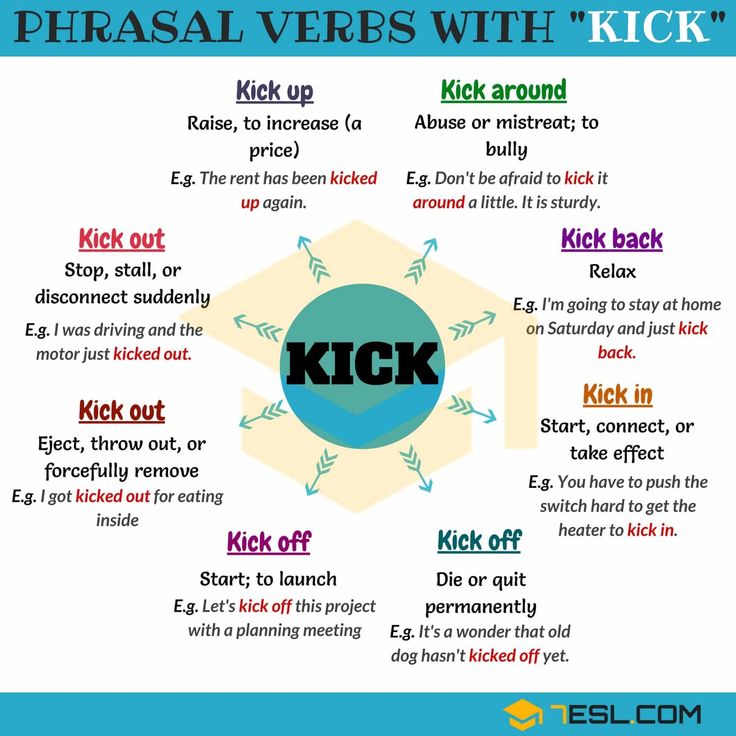 Also, ensure the tires are balanced, rotated on schedule, and have the shop do a 4-wheel alignment.
Also, ensure the tires are balanced, rotated on schedule, and have the shop do a 4-wheel alignment.
If none of these are making a difference and your tire(s) continue(s) to go out of round after a couple thousand miles, you should inspect the wheel (rim) for imperfections, bumps, dents, bends, cracks, not round, etc.
You may also want to look into buying quality tires that are specified for your particular vehicle to fix this issue.
Symptoms of Out of Round TireSymptoms of an out of round tire are similar to an out of balanced tire. So, before you think your tire is out of round, check for a balancing issue.
Due to the rarity of an out of round tire, because of technological advancements in tire creation, more than likely your tire isn’t balanced.
When determining the problem you are facing with your potential out of round tire(s) consider the following:
 Types and causes of tire wear - an article from the company "SHINOavtoSERVICE"
Types and causes of tire wear - an article from the company "SHINOavtoSERVICE" With mileage, the technical condition of tires changes, which affects the performance of the car and traffic safety. Therefore, it is important to monitor the uniformity of wear of all tires, and also to prevent the operation of the vehicle, the residual height of the tire tread of which is lower than the minimum allowable. The task of preventing premature wear and destruction of tires is very complex and is associated with the ability to determine their types, accurately identify the cause that caused each specific tire failure. The increased wear of your car tires is influenced by many factors, or, to put it bluntly, violations. The fact is that many car owners do not follow the basic rules for maintaining their own or working car.
This happens either due to ignorance or negligence. Due to the periodic and timely inspection of car tires, you can get complete and necessary information about the condition of the wheels and tires, the degree of wear, identify defects that are dangerous for traffic safety, determine the causes of tire wear and the features of car operation.
In addition to safety, tire condition affects handling, driving dynamics and fuel consumption . The latter is especially important for trucks and car owners with high daily mileage. Some tire manufacturers claim in their flyers that their tires will not only last longer, but will also save fuel. Let's see how tires really affect a car's fuel consumption. In a truck, this is of course more noticeable than in a passenger car, due to the large number of wheels and high loads. The rolling resistance of an entire vehicle consists of a whole list of resistances: air resistance, overcoming inertia forces during acceleration, internal resistance of engine and transmission components, and tire resistance. We will not dwell on all these factors and focus on tires.
The total rolling resistance of tires is also made up of several components. Contrary to popular belief, tire friction on the road surface of is only 5%. A little more (about 15%) falls on air resistance .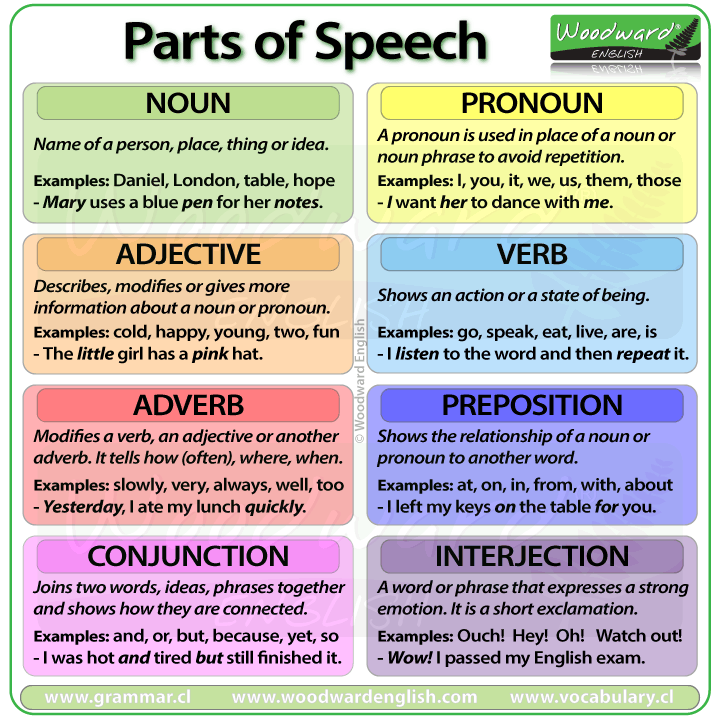 The lion's share of the energy expended (about 80%) is spent on tire deformation . If the tire is rolled along the road with no load at all, then before stopping, it will move for a long time. But if the tire is loaded so that its lower part begins to deform (compress), after the initial impulse it will stop very quickly. This clearly demonstrates how much energy is spent on the constant deformation of the tires.
The lion's share of the energy expended (about 80%) is spent on tire deformation . If the tire is rolled along the road with no load at all, then before stopping, it will move for a long time. But if the tire is loaded so that its lower part begins to deform (compress), after the initial impulse it will stop very quickly. This clearly demonstrates how much energy is spent on the constant deformation of the tires.
Thus, car owners may want to buy tires that will deform minimally, and therefore create less rolling resistance. Now in the market such an option is quite possible to find. As a rule, these are inexpensive budget-class tires. A stiffer carcass, although it gives some fuel economy, at the same time can present an unpleasant surprise in the form of a tire explosion. You just need to run into any object with sharp edges (stone, piece of iron, etc.). By the way, a similar situation can happen with premium tires. Some drivers, mostly trucks, inflate their tires on purpose to save fuel, without realizing that uneven wear will appear.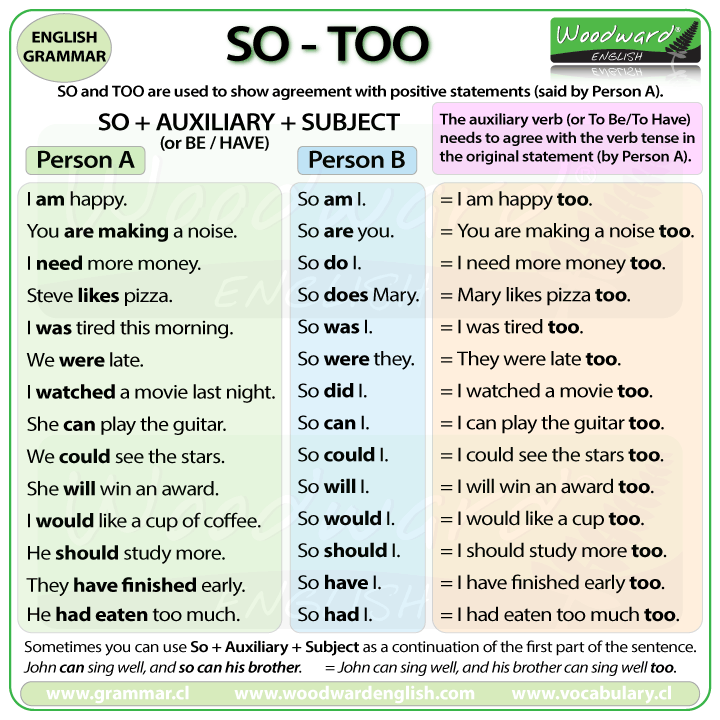
The chassis geometry of the also has a significant impact on fuel consumption. Even minor deviations entail extra costs. Firstly, tires wear out faster, and secondly, fuel burns more. When the wheels, figuratively speaking, go in different directions, additional energy is spent on their "drag". For example, if at one meter the wheel “leaves” only 2.5 mm, then at a kilometer it turns out that the wheel will “drag” to the side by 2.5 m. 2.5 kilometers at full load.
Normal tire wear
Tire inspection provides you with information about the condition of the tires and wheels, how the vehicle is used, possible defects, and driving style. So, for example, a sporty driving style leads to a different tire wear pattern than a quiet one. For a correct assessment, it is necessary to inspect all the wheels. This is especially evident in the example of a passenger rear-wheel drive car, since the load is distributed differently between the driving and steered wheels in it.
Tire wear as a function of air temperature
Tire wear as a function of driving speed
While driving, tire wear is determined by measuring the remaining tread height. Tire wear must be uniform over the entire circumference; when the minimum tread height is reached, the tire is considered completely worn out and must be replaced. Tire wear is primarily determined by driving style. Hard acceleration and braking wears out the tire faster than steady motion.
Drive and steer wheels have different wear patterns due to different loads. Steered wheels wear more on the sides, since it is on this part of the tire that the main load in the turn occurs. Tires on drive wheels wear more in the middle , since it is this part of the tire that contacts the asphalt and transmits the rotation of the wheel to the road. On vehicles with front-wheel drive, the wear is "cumulative" - in this case, the entire tire wears out evenly and its central part and sides.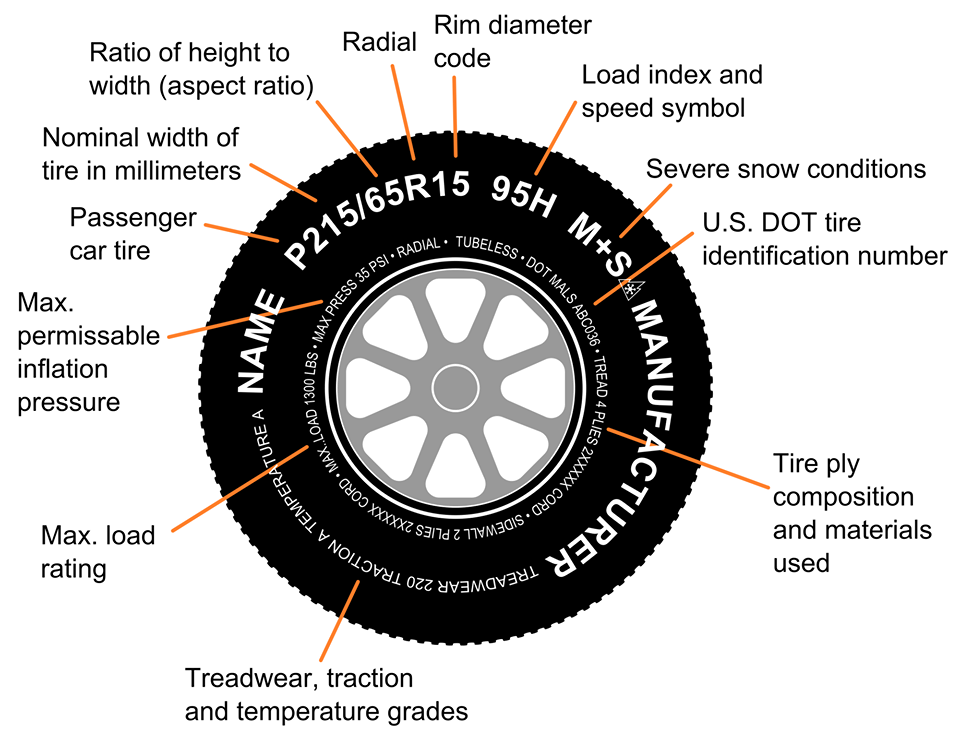
One-sided wear (possible reduction in wear from 15% to 30%) - occurs more often than others, since there are several reasons for its occurrence. One-sided tire wear can be caused by an error in suspension geometry. To determine the cause in this case, it is necessary to check the toe-in and camber. Wear on the outside of the tire can be caused by excessive positive toe or camber . Wear on the inside of the tire, on the other hand, causes excessive negative toe or camber. Driving with zero camber results in even but increased tire wear. In addition, it increases the tire's rolling resistance and increases fuel consumption . In addition to the tires of the steered axle, tires of other axles can also be subject to one-sided wear - again due to problems with the geometry. This is either a lack of alignment, or deformation of the axes themselves. On steering tires for tractors, one-sided wear may appear due to the operating conditions of the vehicle. Another reason is cornering at high speeds. To prevent one-sided wear, you need to monitor the condition of the chassis, periodically check the geometry and abandon the aggressive driving style.
Another reason is cornering at high speeds. To prevent one-sided wear, you need to monitor the condition of the chassis, periodically check the geometry and abandon the aggressive driving style.
Bilateral and central wear (possible reduction in mileage from 5% to 10%) appear for the same reason - tire pressure mismatch. When the pressure is below normal, the tire begins to wear more at the edges, and bilateral wear is obtained. The same thing happens during overload - the tire, even with normal pressure, rides as if it were lowered. Fans of pumping tires get a different result: the load on the contact patch is not distributed evenly, but closer to the center, which means that the tire wears out faster in the central part of the tread. Anyone who monitors tire pressure and does not overload the car does not encounter such problems.
Multiple wear around the circumference
Patchy wear (possible 10% to 20% reduction in mileage) is a direct result of imbalance.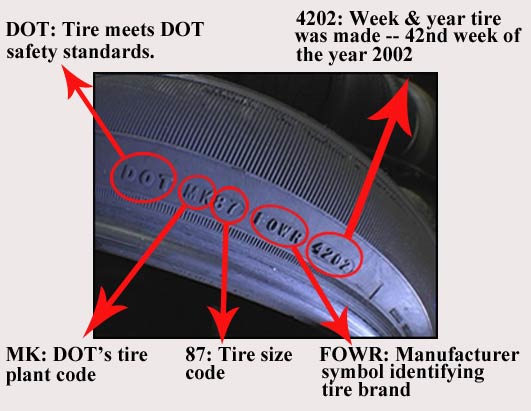 It is especially characteristic of steering axle tires, but can appear on all axles. If such wear has become visible to the naked eye, the problem is obvious. Balancing will correct the situation, but only partially: a wheel that has lost its roundness will wear out more intensively. Therefore, it is more expensive to ignore balancing when buying and installing new tires. Repeated wear spots around the circumference of the tires can cause suspension failure (arms, dampers, springs). After diagnosing and repairing the suspension, the tire must be replaced, since this wear pattern no longer ensures its uniform rotation, and the wheel will “beat”.
It is especially characteristic of steering axle tires, but can appear on all axles. If such wear has become visible to the naked eye, the problem is obvious. Balancing will correct the situation, but only partially: a wheel that has lost its roundness will wear out more intensively. Therefore, it is more expensive to ignore balancing when buying and installing new tires. Repeated wear spots around the circumference of the tires can cause suspension failure (arms, dampers, springs). After diagnosing and repairing the suspension, the tire must be replaced, since this wear pattern no longer ensures its uniform rotation, and the wheel will “beat”.
Spot wear
Spot wear in one spot is the result of emergency braking with a locked wheel. The uniformity of rotation of the wheel in this case is also broken and the tire will have to be replaced. If you leave the car for a long time in the parking lot, then there is a risk of flat areas on the tires, which then during the movement will cause the wheels to vibrate. It is recommended to increase the pressure in the tires if you leave the car for a long time. A similar effect can also be caused by stopping the car after intense sports driving - heated tires are easily deformed at the points of contact with the road surface and practically “freeze” in this state. This defect is easy to fix - after warming up the tires, they will again acquire a round shape.
It is recommended to increase the pressure in the tires if you leave the car for a long time. A similar effect can also be caused by stopping the car after intense sports driving - heated tires are easily deformed at the points of contact with the road surface and practically “freeze” in this state. This defect is easy to fix - after warming up the tires, they will again acquire a round shape.
Comb (sawtooth) wear (possible reduction in mileage from 10% to 20%) is a form of uneven wear. It can often be seen on drive axle tires with a block tread pattern. It is caused by the fact that during the movement the tire is deformed - at the point of contact with the road, the tread is pressed inward (the blocks are crushed and dragged along the road surface), and as the wheel rotates, it straightens again. This leads to the fact that the tread wears more on the front edge than on the back. The result of this wear is an increase in tire rolling noise. It is impossible to avoid the appearance of comb wear, but with the help of permutations, its negative effect on tire mileage can be leveled. Drivers can also influence the situation: if you step on the gas pedal as smoothly as possible, comb wear will be minimal. To even out this wear, tires are usually swapped, as tires on a non-drive axle are more susceptible to this wear. Low tire pressure also increases sawtooth wear.
It is impossible to avoid the appearance of comb wear, but with the help of permutations, its negative effect on tire mileage can be leveled. Drivers can also influence the situation: if you step on the gas pedal as smoothly as possible, comb wear will be minimal. To even out this wear, tires are usually swapped, as tires on a non-drive axle are more susceptible to this wear. Low tire pressure also increases sawtooth wear.
Driving with the wrong tire pressure
Insufficient tire pressure causes the tire to flex in the middle and wear out at the edges as a result. Excessive pressure in the tire leads to the opposite effect - its middle part wears out. It is authentically known that it is impossible to create an ideal tire. If you make it economical, it will be too rigid and unsafe. Conversely, a soft, durable tire with good grip will inevitably have increased rolling resistance. Manufacturers strive to find the best solution, but in any case it will be a compromise between durability, reliability, safety and economy.
Source: www.avtoregion36.ru/information/article/iznos
Each manufacturer indicates the so-called wear index on the tire profile, which most often looks like the inscription “Treadwear 100” and means a maximum of 48,000 km on a standard road surface (polygon). In a real environment and often not the most ideal roads, this number actually needs to be divided by 1.5 - we get 36,000 km.
By analogy, if the wear resistance index is 150, then this means “factory” 72 thousand km, 200 - 96 thousand km. , and so on.
, and so on.
What are the dangers of worn tires on the road:
adhesion to the roadway deteriorates, which leads to an increased likelihood of skidding, accidents, hydroplaning in case of rainy weather;
reduced cross-country ability in off-road conditions;
increases the risk of a tire puncture while driving.
It is also worth remembering that the issue of tire wear is regulated by traffic rules, and you can get a fine for using “bald” rubber. Knowing what maximum tire wear is acceptable, this is easy to avoid: 1.5-2 mm for summer, and 4-5 mm for winter (a more accurate figure is indicated by the manufacturer).
1. According to the wear indicator on the tire. To find this indicator, you need to inspect the side of the tire and find one of the markings: a triangle, a company logo, a snowflake, or the abbreviation TWI. If the tread has worn down to this indicator, it means that the tire needs to be disposed of urgently.
2. Many people in the old fashioned way prefer to use a 10-kopeck coin. Insert it into the tread with the inscription "10 kopecks" towards you, and if it is visible, the wear level is too high, you need to replace the tire. This method is convenient, but not entirely accurate: by measuring wear in different parts of the tire in this way, it will be difficult to estimate its unevenness by eye, and this is also an extremely important indicator.
3. It is optimal to use a special gauge, depth ruler or caliper for these purposes. This will allow you to measure the wear of the tread in different parts of the tire with an accuracy of up to a millimeter and understand if there is uneven wear.
If measurements show different results in different parts of the tread, it is important to determine exactly how your tires wear in order to understand where and what the operating error is.
If the tread wears more on the sides and the center wears off less, this means that the tire pressure is insufficient and the contact patch with the road is not correct. This leads not only to poor vehicle stability, but also to increased fuel consumption.
This leads not only to poor vehicle stability, but also to increased fuel consumption.
If the tread is worn down the middle but the sidewalls are fine, then your tires are overinflated. Sometimes this is done intentionally in order to save fuel, but in this case, the tires will still have to be changed ahead of schedule.
There is also the possibility of increased wear on the inside or outside of the tread - this indicates an incorrect camber. A visual table with wear options and their causes:
Cracks on the sides of tires can indicate frequent off-road driving, improper storage, low-quality rubber or long service life, as well as incorrect tire pressure.
Bulges or "hernias" on the sides of the tires appear as a result of the side part hitting hard obstacles. Tires with such damage are not recommended.
Dents on the tread indicate insufficient depreciation and unadjusted camber. Having found such damage, it is necessary to drive the car to the service and make sure that the suspension is in good condition.
Having found such damage, it is necessary to drive the car to the service and make sure that the suspension is in good condition.
Individual wear spots on the tread indicate aggressive driving / braking, skidding with wheel locks, or prolonged parking of the car in one position.
Most often, this is required for the sale and purchase of used tires in order to orient the buyer in the degree of their wear. Many sellers give this figure at random, but this method has nothing to do with the actual assessment of the degree of tire wear. It is also important to understand that a conditional 50% wear for a summer tire is an acceptable value, while 50% wear of a winter tire tread is a sign that the tire cannot be used. Therefore, it is important to know how to accurately determine the percentage of tire wear so as not to get into an unpleasant situation.
Many people divide the actual tread height by the height of the same, but new tire, and get a certain percentage of wear.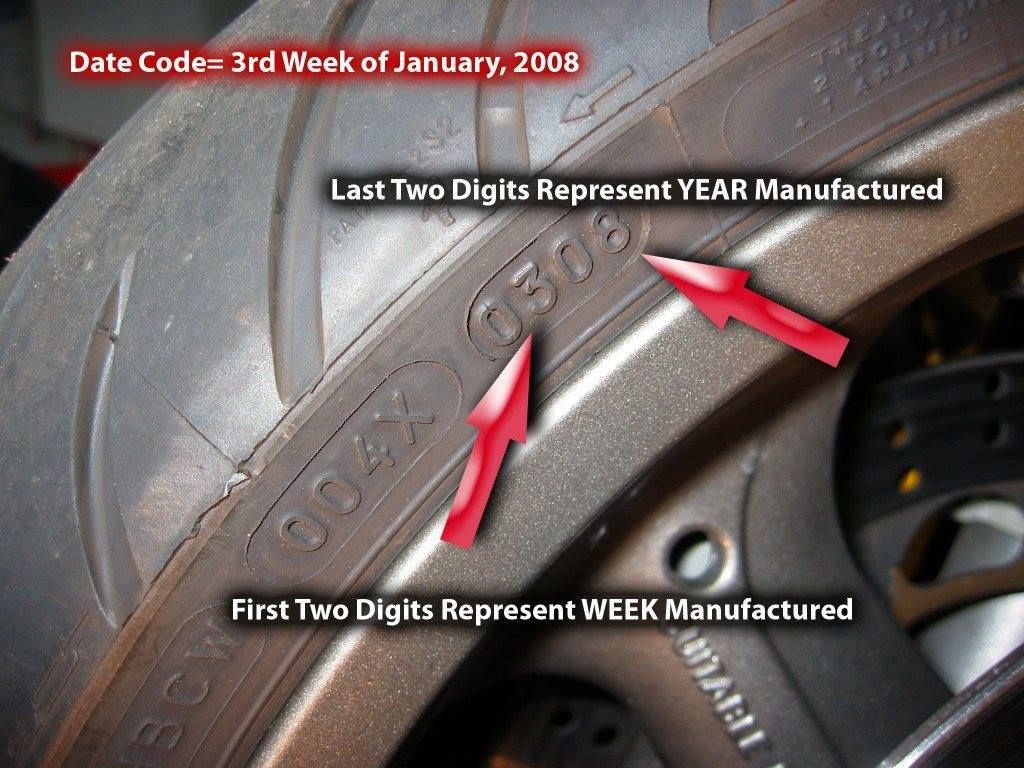 This would be correct, if not for one BUT: we cannot physically erase the tread to zero, and the law prohibits the use of tires with a tread below the permitted values.
This would be correct, if not for one BUT: we cannot physically erase the tread to zero, and the law prohibits the use of tires with a tread below the permitted values.
You can calculate actual tire wear by dividing the difference between the new tire height and the actual tire height by the difference between the new tire tread height and the minimum possible tread height for that tire, and then multiplying this number by 100.
If it is impossible to find out the height of the same, but with a new tire, use the average values of your tire type:
| Tire type | Average tread height at start of use |
| Winter tires with Scandinavian tread | 10 mm |
| Winter with regular or asymmetric tread | 9 mm |
| High-speed winter | 7 mm |
| Summer tires with classic tread | 8 mm |
| Summer speed | 7 mm |
You can check summer tires for wear a little less often than winter tires, since in summer the tread depth is not so important for patency.